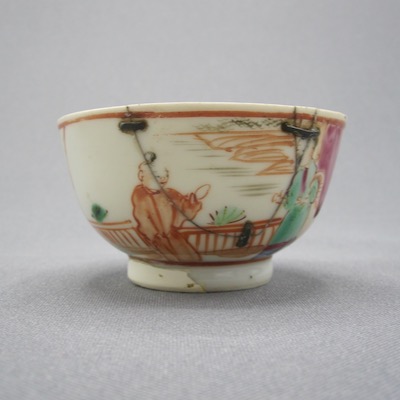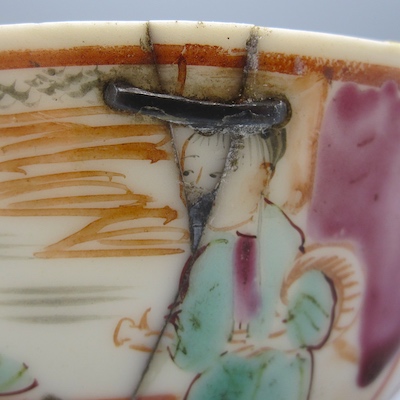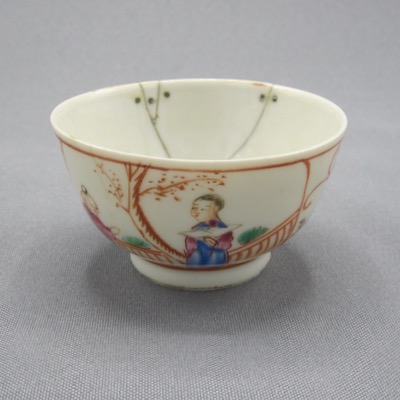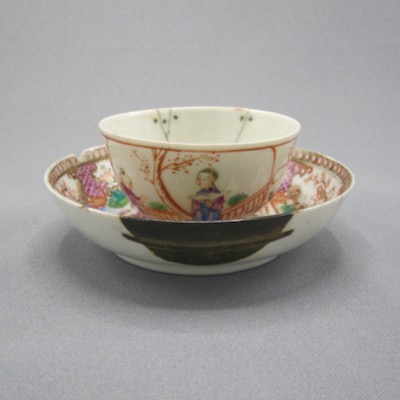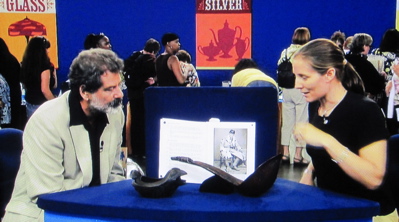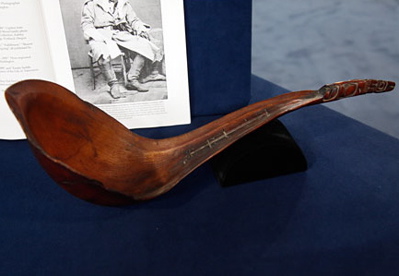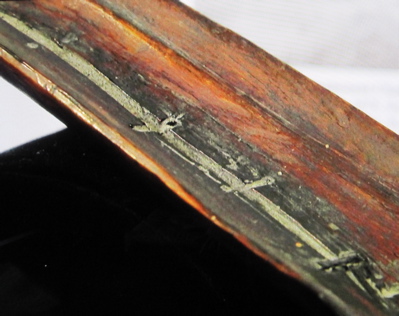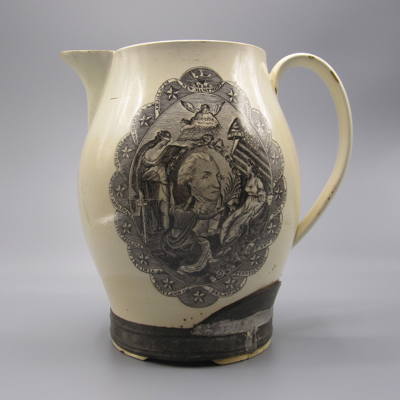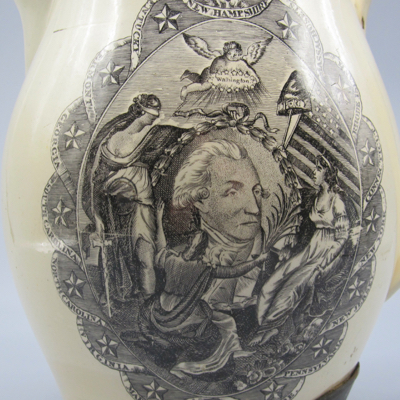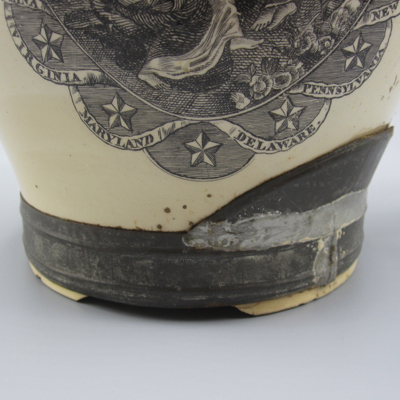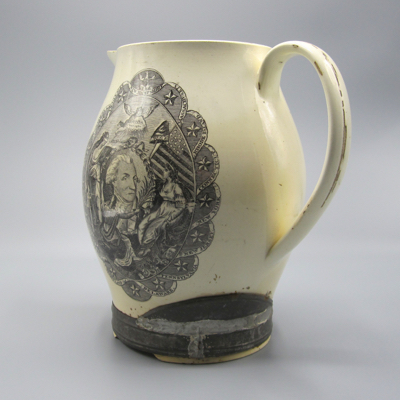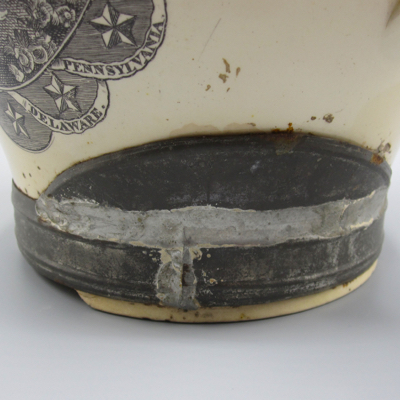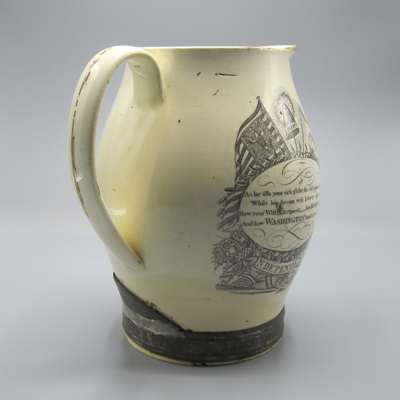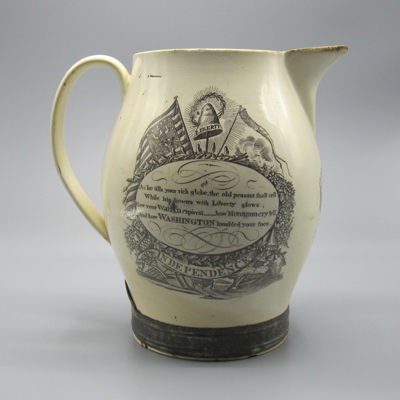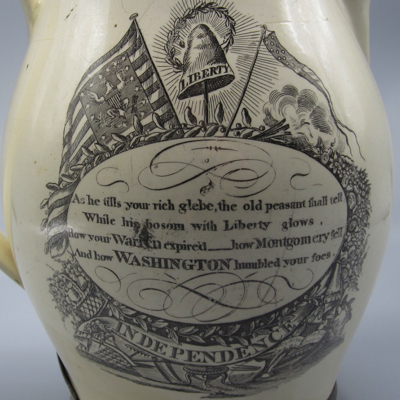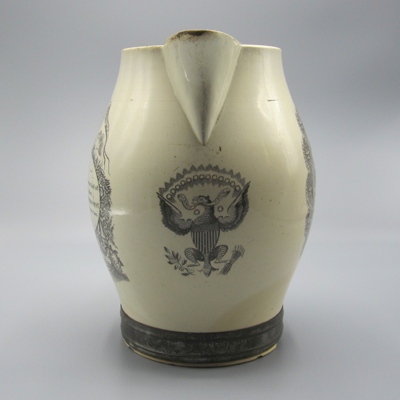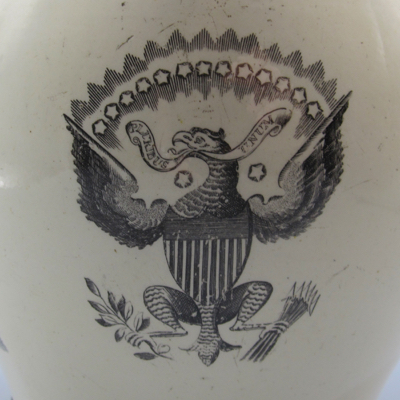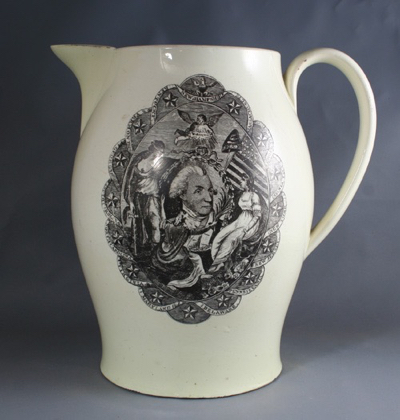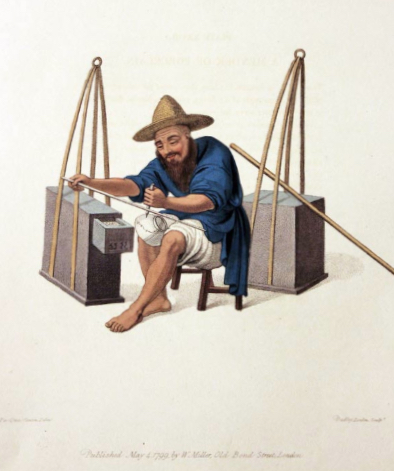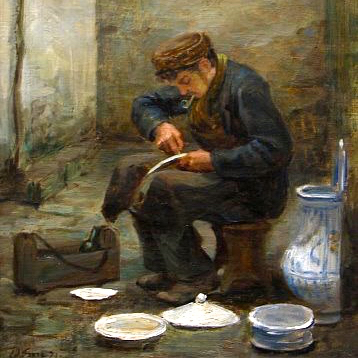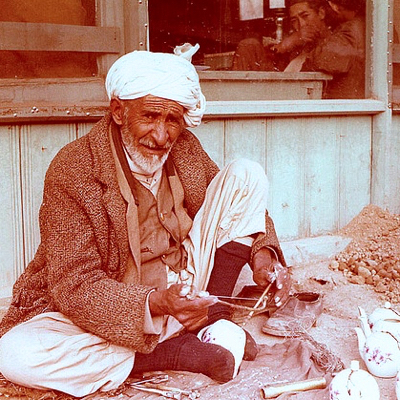This porcelain tea bowl was made in China, c.1765-1775, during the Qianlong Period. It measures 1.75 inches high, with a 3 inch diameter opening and is decorated in the Mandarin palette, with polychrome enamels featuring a couple on a terrace.
After the fragile bowl dropped and broke into 3 pieces, it was repaired most likely by an itinerant “China Mender” using 3 small metal staples, aka rivets. Unlike most examples where the rivet holes penetrate the surface about half way, these holes have been drilled all the way through.
I bought this, along with a mismatched saucer, from one of my favorite shops in London and was told by the owner “… we bought this little saucer yesterday with a lovely metal ‘plate’ tinker repair and supporting bar, the bar is etched with little line decoration, I don’t think I have ever seen a repair like this before, it does come with a bog standard riveted tea bowl, we would split them but the bloke we bought them from told me they had been together on his mother’s mantlepiece for at least 70 years, and I am a bit sentimental like that.”
The last photo shows the tea bowl along with the saucer, which I posted earlier.
